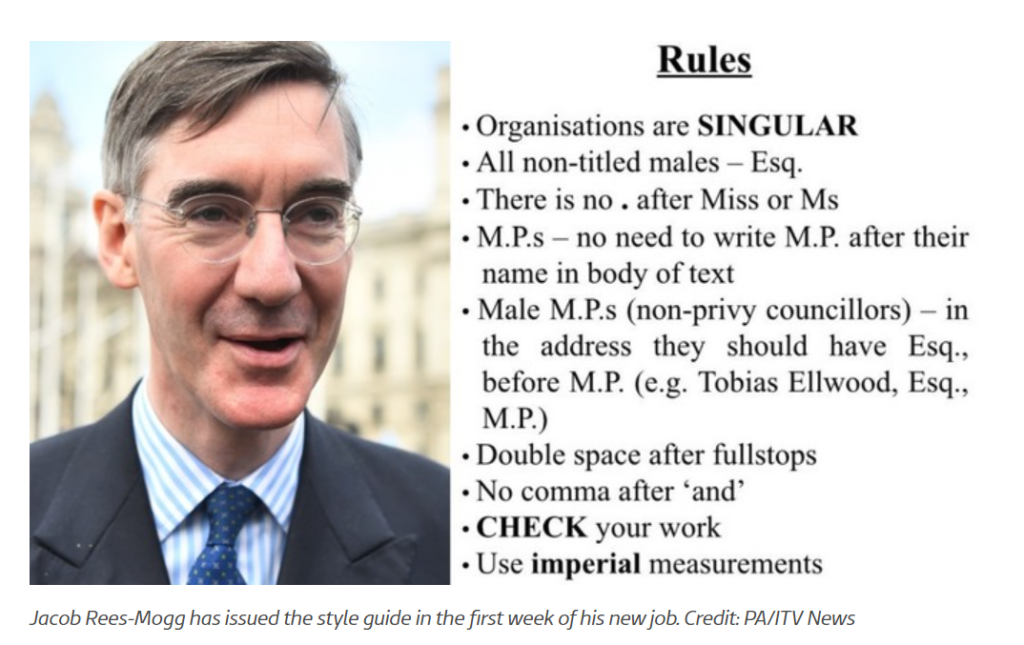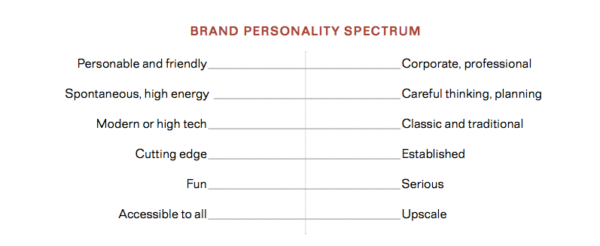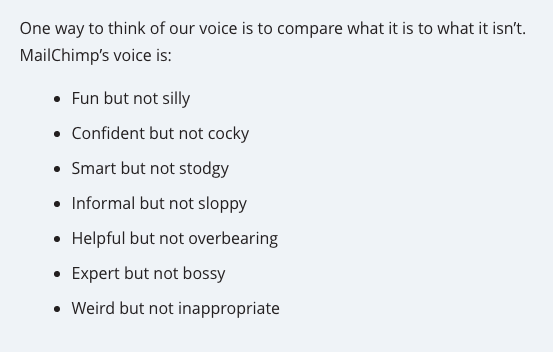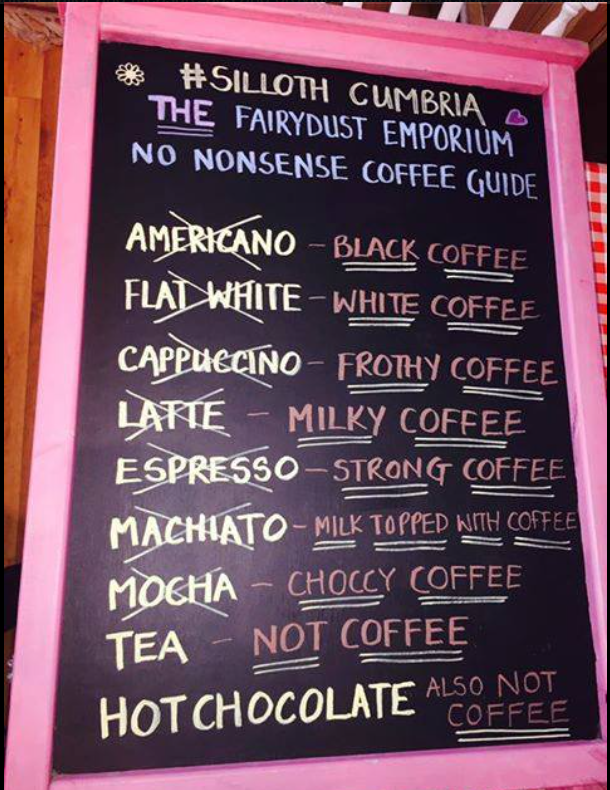Growing up, my mum had half-a-dozen stock phrases that were often rolled out. One of those was, ‘we don’t say what, we say pardon’.
‘We don’t say what, we say pardon’ was my mother’s valiant (often wasted) attempt to ensure that we projected a consistent and clear family message; that we were polite, had been well brought up, and knew our Ps and Qs.
‘We don’t say what, we say pardon’ was a core component of our family style guide.
Other elements of the style guide included:
- The letter H is pronounced ‘aitch’ and never ‘hay-tch’
- ‘Yes’ is always followed by ‘please’
- ‘No’ is always followed by ‘thank you’
- And only one swear word is permissible, and only then when being used to refer to something foul-smelling that we’d accidentally stepped in.
These rules formed part of our branding.
Not, of course, that my mum purposely set out to write a style guide or create a brand out of our family life; we weren’t the Beckhams. But by setting out in clear and uncertain terms what we did and didn’t say, how we said it, and the way we were therefore viewed by the outside world, it essentially served the same purpose.
Increasingly, brands both big and small (and MPs in the case of Jacob Rees-Mogg’s advice to staff) are making use of style guides to help them develop their brand voice.

So what is a style guide?
Simply put, a style guide is a way of putting your brand into words.
Style guides lay down the rules that formalise your brand’s image when it comes to content and will include aspects such as grammar, punctuation, spelling, language, formatting, word usage and tone of voice.
Where will it come in useful?
Anywhere you produce content. That could include blogs, website copy, newsletters, emails, advertising, promotional literature, onboarding documents, internal comms, videos, infographics and anything else that carries your logo or contains content that represents your brand in some way.
In an age when content is king, no matter how big your organisation, you will most likely be creating plenty of the stuff, or looking to create plenty of the stuff in the future.
What does a style guide achieve?
A style guide sets out to achieve several important things:
- Keep your brand’s tone, voice, and messaging consistent and recognisable
- Guide your team on how to write for your specific target audiences
- Improve the accuracy of your published content
- Help maintain a recognisable quality and brand identity
- Produce more effective content with more focus on your audience
As Uber put it in their style guide, you want to convey the best of your brand personality to the world, and by creating rules around how your brand is represented in your content, you’re better able to achieve this.
Yes, but I’m not Uber. Do I really need one?
When more than one person is responsible for content creation, keeping the tone of voice uniform is very tough. A style guide keeps your organisation’s overall voice consistent.
That matters because, no matter how big or small your organisation, giving your audience a consistent experience builds loyalty and trust. When there’s no consistent message, they don’t know who you are and what you stand for.
It also helps each member of your team produce better quality content. Grammar, punctuation and formatting all contribute to the quality of your content, and a style guide keeps all that in check.
The nitty-gritty: building a style guide
Creating a style guide starts with research; who your audience are, what your brand stands for (and against), your business goals and what differentiates you from your competitors. These will all influence the content. So do your research first or revisit any research you’ve done into these areas in the past.
What you need to include will be specific to your brand and to the type of content you produce, but a basic style guide will include the following:
- Introduction: This might include a mission statement, ‘About us’ type paragraph, or overview of your audience and message.
- What straplines should be used, and where they should appear.
- Grammar and punctuation: Things such as: whether you allow the use of contractions, whether you allow the use of the Oxford comma, whether writers can start sentences with conjunctions, and whether exclamation marks are acceptable? What words do you capitalise? State Pension, Wills, Bull and Bear markets, for example? Are ampersands (‘&’) permitted? Are numbers written numerically or as words? Are percentages written using the word ‘per cent’ or using the % sign?
- Approved content and referencing: Research is a key part of the content creation process. Creating a list of approved and valuable resources makes a writer’s life much easier. Include a list of absolute no-nos too. Also, address how you credit references and images; do they appear in the copy body or footer? Which system of referencing do you use?
- Language: Include any specific language your team should and shouldn’t use (for example, always ‘client’, never ‘customer’), which corporate jargon can be used in client communications, and whether you allow emojis to be used in your written content to clients. Also, do you allow the use of slang words?
- Formatting: How are headings and subheadings to be formatted? Do you use title case for headings? Should they always be in a certain font size? How should team members format company contact details (e.g. commas in the address? ‘Telephone’, ‘tel’ or ‘t:’). How you format bullets, hyphens and quotes. Should speech be placed in “double quotation marks” or ‘single quotation marks’?
You get the idea.
If your style guide is to form part of wider brand guidelines, then you will also need to consider:
- Brand colours
- Imagery and how it’s to be displayed
- Your brand logo and instructions on how each version can be used
- Fonts
A style guide doesn’t have to be reams of paper; a couple of pages might cover it.
You may decide you want to break the contents of your style guide down by medium type; guidance on writing emails, guidance on writing blog posts, guidance on social media posts and so on.
And finally, you will want to talk about tone of voice. This is a biggy…
-
Tone of voice
This part of your style guide is arguably the most important and may well determine the answers to many of the grammatical, lexical and punctuation questions posed above. For example, determining how formal or chatty you want your tone to be will determine whether or not your written communications can include slang.
Your brand voice is the translation of your brand’s positioning and personality into a writing style. And it’s a much-neglected, but an extremely important aspect of brand communications, particularly in the digital age.
Voice plays a powerful role in shaping brand perceptions. Think of a few big brands and you’ll realise just how many different types of voice there are; and how strongly associated some brands are to their choice of voice. Virgin Media = tongue-in-cheek, easy-going, playful; Cancer Research = human, direct and personal, authoritative but caring; Innocent drinks = quirky, witty, informal.
These brands are credible and powerful because their voices are consistent with and reinforce their brand promises.
As Uber put it:
“Voice and tone express a brand’s essence, signalling who we are and what we stand for. They create the feeling: “that sounds like Uber.”’
So, how do you discover and develop your voice?
Your voice and tone should come from your audience and brand so you need to know both really well. Take this example from Jamie Oliver’s brand guidelines:
“Our tone of voice is purposeful passion. It is about bringing meaning and credibility to all that we say. We achieve this by using straight-talking and energetic language.”
To develop your voice, you need to have a clear insight into your brand. So ask yourself:
- What is your purpose / promise?
- What do you stand for?
- What are your values?
- How do you communicate the above?
Think about what differentiates you from your competitors. This matters because when you write like everyone else, you’re telling your audience that you are the same as everyone else. Which is unlikely to be the result you’re after.
Then come up with a list of words that characterise your brand personality. If you find this hard to nail down, then using a brand personality spectrum like the one below may help you work out where your brand sits.

Source: Gather Content
And if you’re still struggling to crystallise what you want your brand to sound like, try thinking about how you don’t want to come across.
Mailchimp does this really effectively in their style guide.

Now you need to think about what that means in practice. If you want a “playful” tone, for example, explore what that means. Give examples of how to do it right, and where it’s done wrong. Where’s the line and how will team members know if they’ve crossed it?

Image courtesy of: https://twitter.com/FairydustHQ/status/904415337688551425/photo/1
If you want to be known as a straight-talking brand, that means being clear, concise and direct. It means you use the active tense more than the passive and that your sentences structures are usually simple and your paragraphs, short. It means you call a spade a spade, and a macchiatto a milk topped with coffee.
Brands that do it well.
If you want some inspiration, the following style guides have great tone of voice sections:
Conclusion
A style guide is about pinning down how you communicate. As much as it is a practical resource, a style guide is also a commitment to more considered content too. It’s a practical, useful resource that will be used by all members of the team.
The points in this article are by no means exhaustive but they should help you get started on developing your own style guide and tone of voice work. But if you need more help, then, by all means, give us a shout. You can get in touch with us through hi@theyardstickagency.co.uk or on 0115 8965 300.


